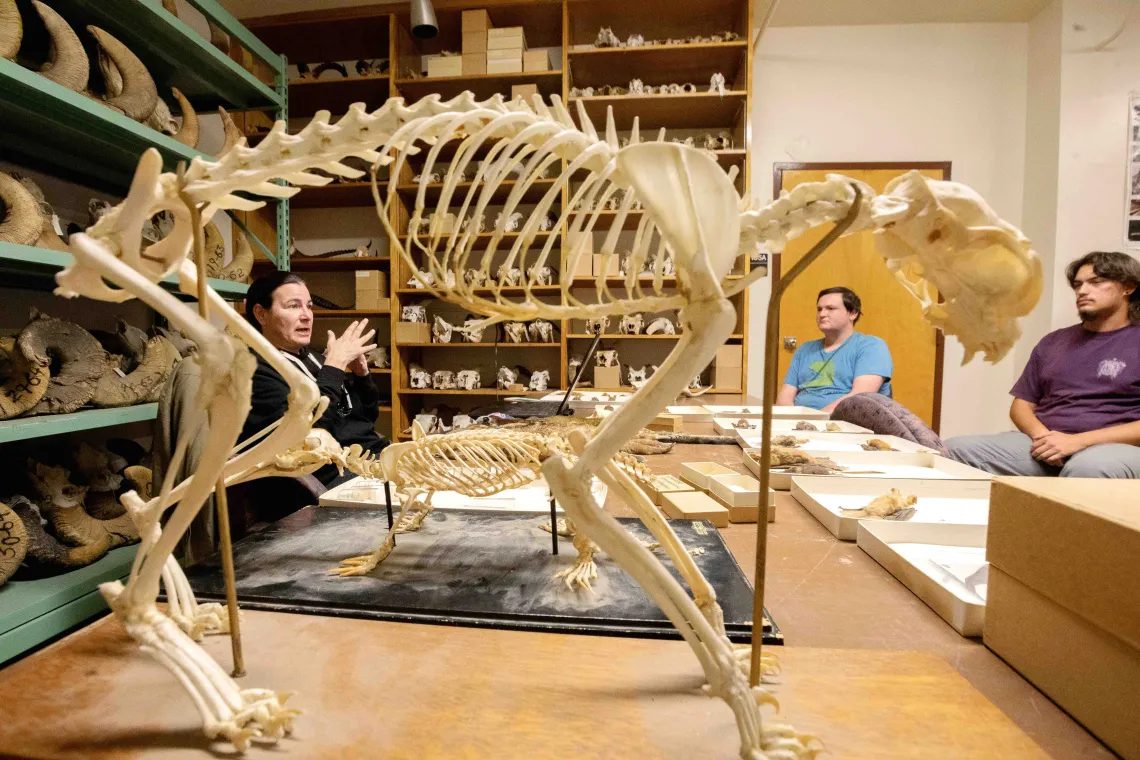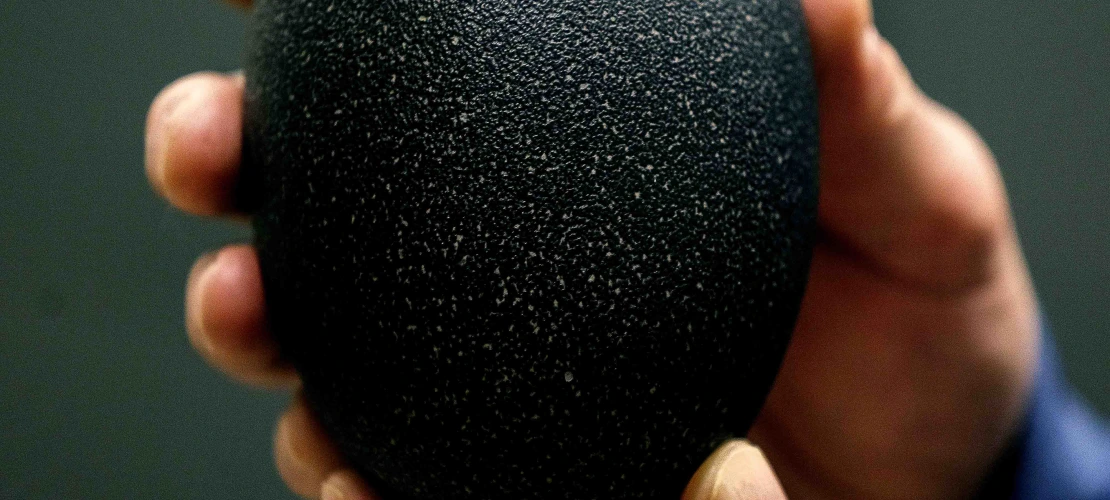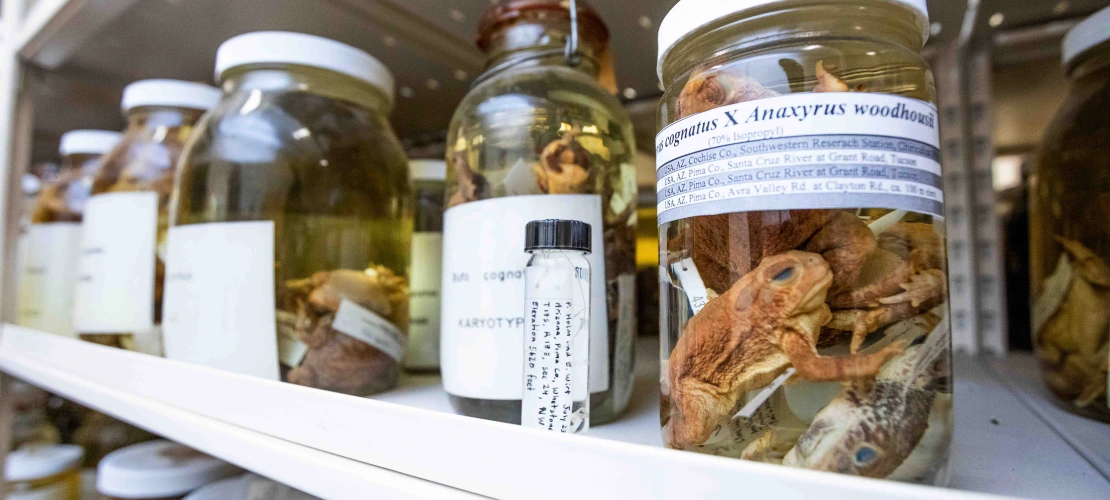A Rare Specimen
An inside look at the University of Arizona Museum of Natural History

Melanie Bucci, curatorial/museum specialist for the University of Arizona Natural History Collections, teaches a mammalogy class.
Chris Richards
Housed throughout two floors of the Biological Sciences East building, the University of Arizona Museum of Natural History encompasses room after room of drawers with tidily organized skins and skeletons and shelved jars of wet specimens. Open one drawer, and several species of bats seem to be sleeping side by side. Walk into another room, and you’ll find 1-gallon jar “lots” of the same kind of lizard, each individually tagged and suspended in clear fluid. Among the many mounted and cataloged specimens, there is even a mature desert tortoise.
As one of the top 20 research museums in the country, this gem is not only a rare find for our campus but a valuable resource both for UArizona and for other top-tier institutions of higher learning. The collection is divided into five categories: mammalogy, ornithology (birds), herpetology (amphibians, turtles and reptiles), marine invertebrates, and ichthyology (fish). It is exclusively a research and teaching collection, meaning there are no exhibits for public viewing, but this scientific library is filled with preserved creatures with stories to tell, some dating back 125 years.
This repository, now boasting more than 200,000 specimens, was established in the early 1900s in response to legislation dictating that the state’s land-grant college would keep a collection of the territory’s flora and fauna. Since then, the museum has developed a significant scientific collection that is invaluable in terms of its specimens and data as well as for the potential that technological advances, such as DNA and isotope testing, will enhance its offerings to scientists.
Each specimen has a voucher that notes where it was found and when. This data helps researchers document ranges, the geographic area a species tends to inhabit, and the impact of human activities. In some cases, the documentation of historical ranges can help predict what may happen to a species in response to climate change.
Peter Reinthal, director and curator of the museum, offers the example of picas — small rodents related to rabbits that historically live only near the tops of mountains. As temperatures climb, pica populations are climbing upward on the mountains they inhabit in response, which raises the question of whether they will face extinction when they can’t go any higher to meet their biological needs.
While the department of ecology and evolutionary biology within the College of Science maintains the collection and offers classes that regularly benefit from in-person access to its specimens, researchers across the university and the country utilize the museum for research. One scientist is researching lead poisoning in condors thanks to the museum’s impressive cache of this endangered vulture. Another is studying variations in the museum’s unmatched collection of bighorn sheep skulls.
And yet another was inspired to conduct novel research upon visiting the museum and noticing significant variation in the coat color of neotomas — a genus of North American rodents that includes pack rats. As it turns out, inhabiting lava flows versus sandy environments influences how light or dark their coats are.
When Reinthal and fellow curator Melanie Bucci are asked about their most impressive individual specimens, they point instead to the sheer diversity of the collection as well as the number of specimens that can’t be found anywhere else. The Southwest is one of the most biodiverse places in the United States, they point out — especially in terms of mammals, birds and herps. The fish collection is also especially noteworthy, they explain, because half the freshwater species in the collection are threatened or endangered. And, they add, some specimens in the collection could not be obtained today, either for legal or ecological reasons.
This incredible resource is truly irreplaceable. To support or learn more about the collection, check out uazcollections.com.





